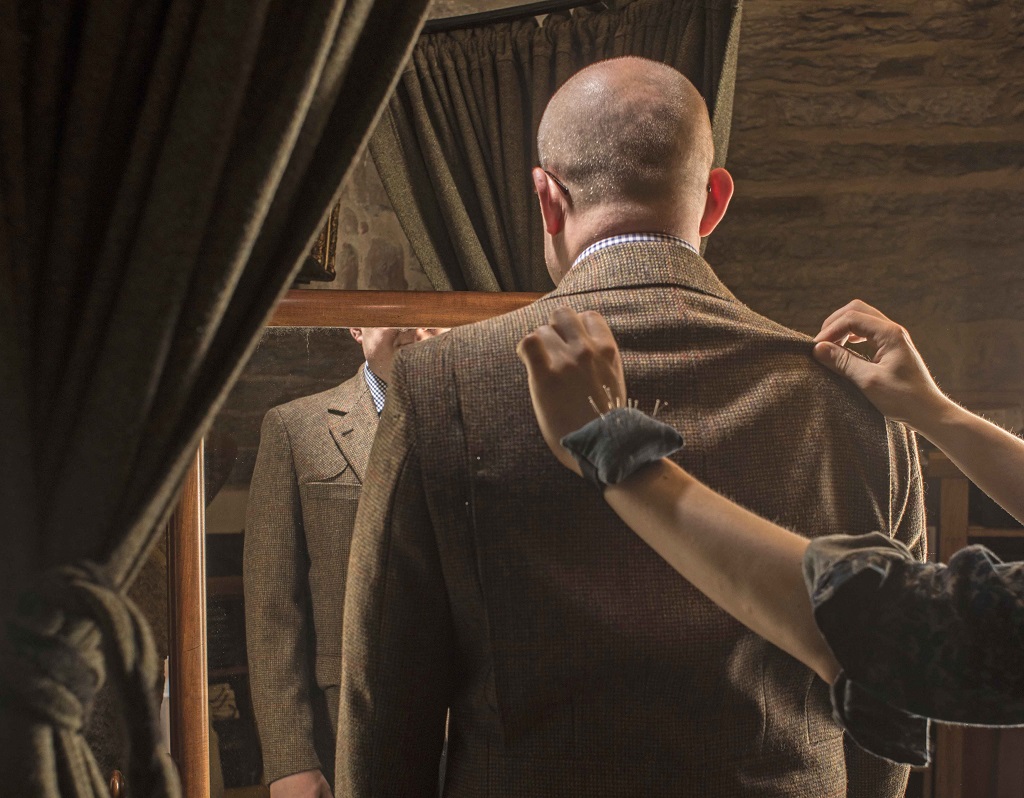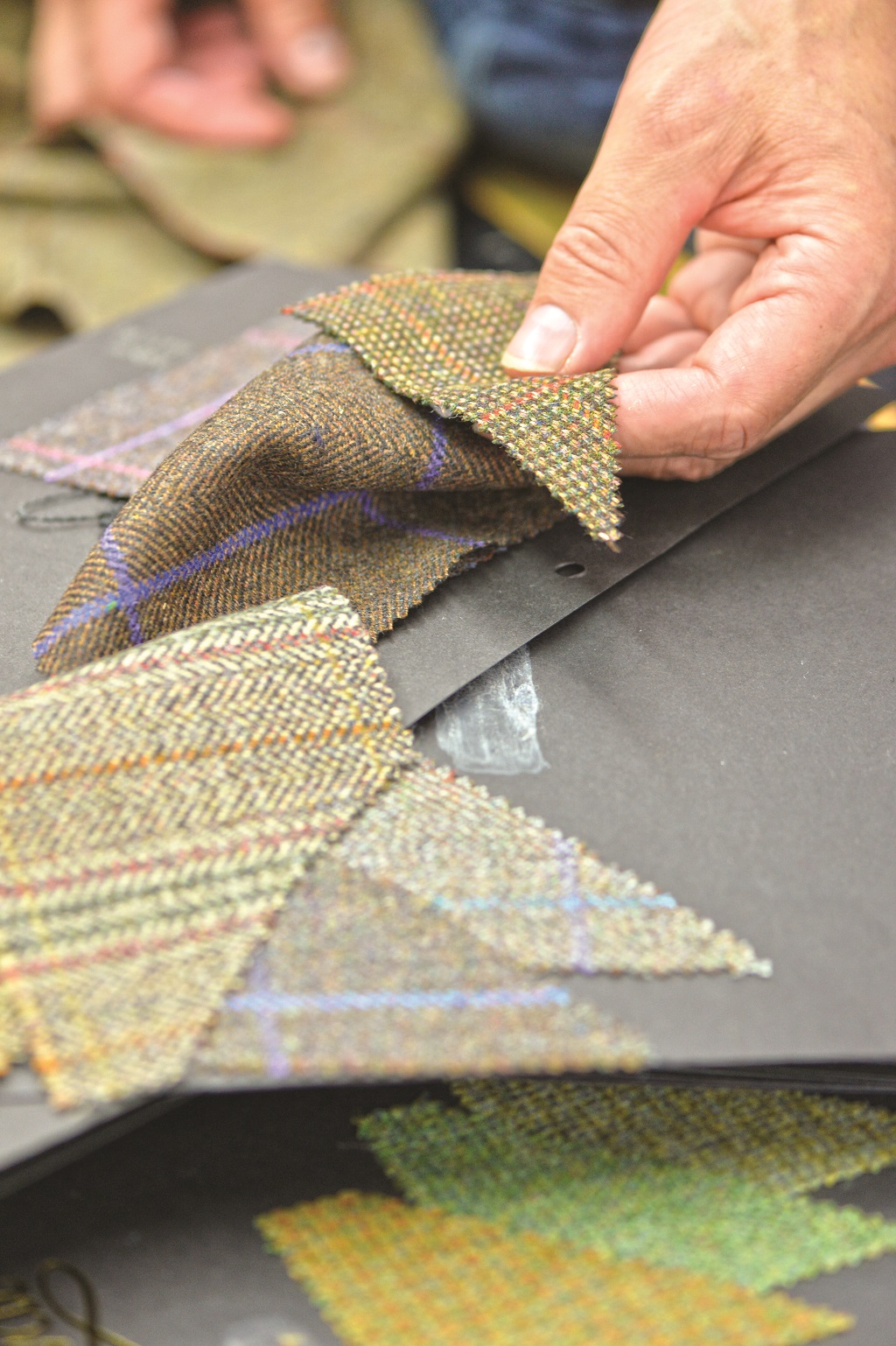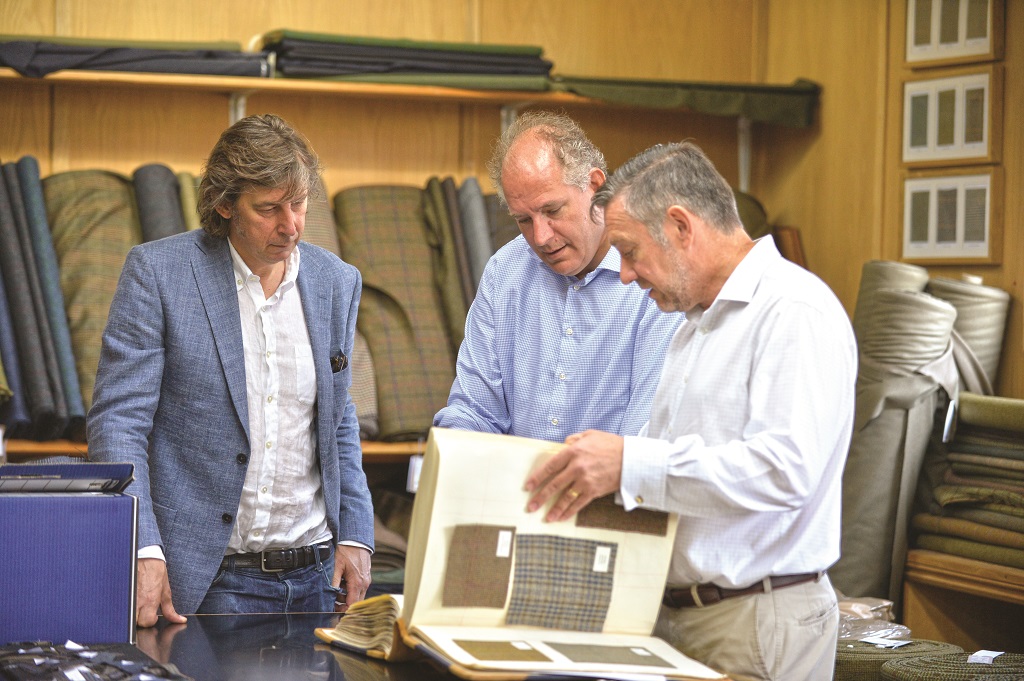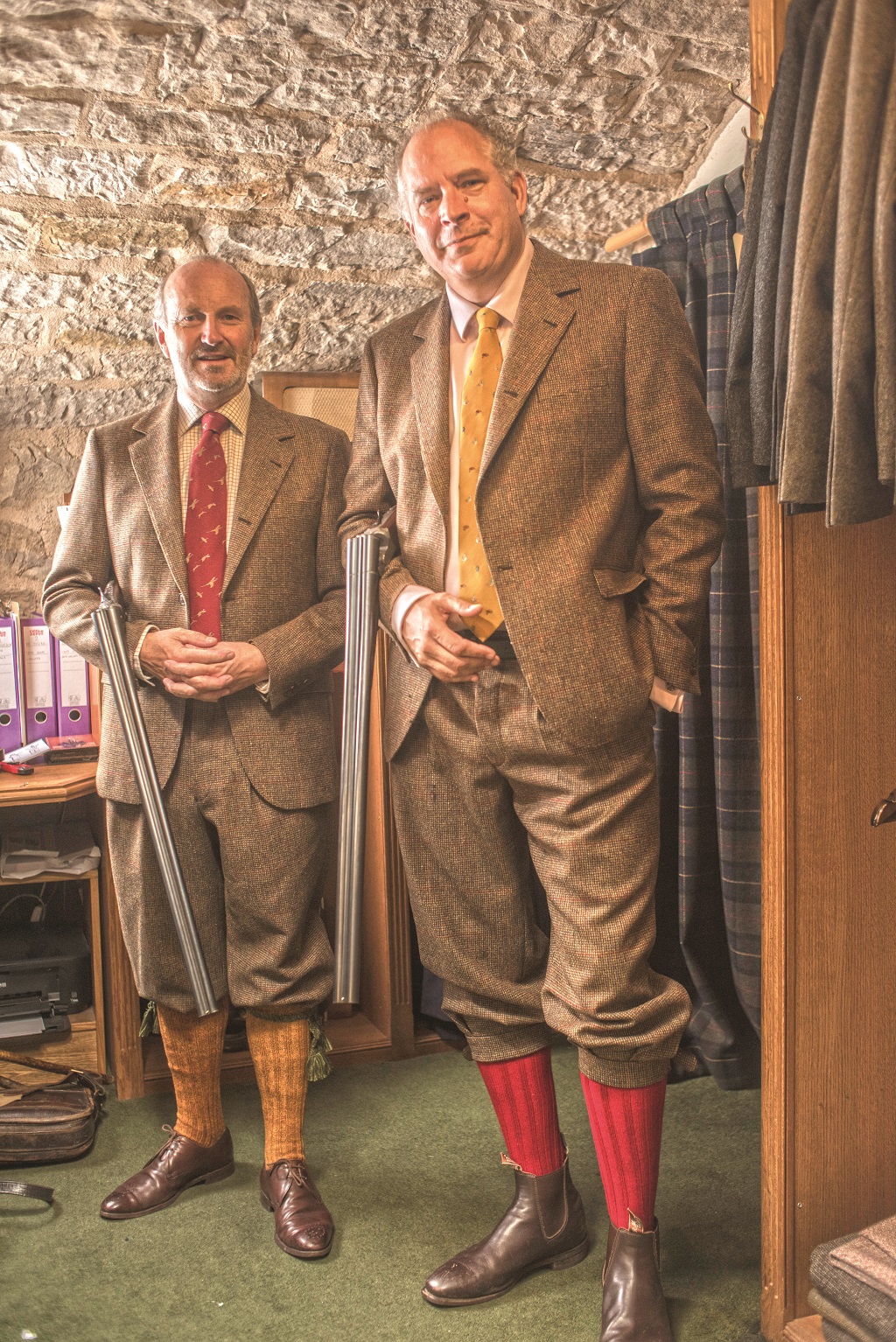When renowned Edinburgh tailors Walker Slater asked two shooting enthusiasts – Scottish Field editor Richard Bath and renowned comedian Fred MacAulay – to help design a shooting suit, a period of research, panic, chaos and tweediness ensued.
Fred MacAulay was perplexed. ‘What do you mean “what’s my favourite colour?”,’ he laughed. ‘When you’re my age I’m pretty sure you’re not allowed to have a favourite colour any more…’
He’s got a point, but then I was floundering. I’d been approached by Paul Walker, the creative genius behind Walker Slater tailors, who had asked me to help design a shooting suit. So I in turn enlisted one of Scotland’s foremost comedic minds on the basis that two shooting heads are better than one. Now I was beginning to wonder.
It was, however, a delightful challenge. How do you design a suit that allows you to move freely? How many pieces should it have? What should it be made of? Should it be just for shooting, or stalking too? What features should it possess? And, of course, what colour should it be?

The first fitting at Walker Slater in Edinburgh (Photo: Angus Blackburn)
We were to join a very select band of Walker Slater collaborators, including the Scottish national rugby and football teams, and although I had plenty of ideas, there is no such thing as too much research, so I shook the trees. Over fifty emails were dispatched to shooting contacts, asking for suggestions. Within hours the ideas began trickling in; within days the flow was more of a deluge.
Most of the suggestions were surprisingly precise (hand-sewn buttons, not machined), and it soon became clear that people who shoot have fixed ideas about what they do – and don’t – like. There were all types of issues to contend with.
Many people like walked-up shooting where they scramble up hill and down glen, so prefer lighter cloth. Height or girth were also issues: the tallest of my correspondents is 6ft 9in, the shortest 5ft 2in, and I estimate the tubbiest moves the needle on his scales to over 20 stones.
As well as personal preferences and pecadilloes (seriously, a Sherlock hat with flaps that tie under the chin?), the range of factors affecting my correspondents’ requirements were extensive.
The arcane discussions were neverending. On jackets and gilets, it was about the size of pockets, whether to have poachers pockets, location of pleats (central or side?), collar (Nehru?), number of buttons, length, belted or unbelted, reinforced elbows for crawling or not. The chat about breeks was just as frenzied as the Plus Fours battled the Plus Twos (my strong preference), while discussion about flat back versus fishtail, and how many pockets, provoked fevered debate.
Finally there was the headwear – flat cap, Bugatti, Edwardian, Peaky Blinders and baker boy all had staunch advocates.

Matching tweeds (Photo: Angus Blackburn)
Who knew that a bunch of men who usually look as if they’ve dressed in the dark could devote such emotion and energy to matters sartorial?
When it came to the material we had virtual unanimity – it had to be tweed – so we went to the experts, Lovat Mill in Hawick. The term ‘tweed’ was coined accidentally 200 years ago when a London cloth merchant misread a label marked ‘Tweel’, the Scots dialect for twill, written on a consignment of cloth from Hawick weaver William Watson, just yards from where Lovat Mill now stands. So I felt we were in the right place.
The first thing Lovat co-owners Stephen Rendle and Alan Cumming did was to wheel out their huge catalogue of estate tweeds, which has over 250 swatches. As ever, there were endless decisions to make – did we want Kevlar-enhanced tweed for extra strength (and in case you ever get invited to go shooting with Donald Rumsfeld) or Teflon coating to showerproof the material?
And what bloody colour did we want? Fred and I had discussed a nice green-based houndstooth, and as I was our emissary for the absent funnyman, I set about finding a suitable cloth.
Meanwhile Paul Walker and Claire Pentony, who are simultaneously Walker Slater’s commercial engine and artistic sensibility, had given thought to what they could actually sell, and had instead gone for what looked like a brown pinhead tweed with red stripes which, when looked at under a magnifying loop, was actually made up of 12 different colours of thread.
On reflection it looked pretty damned good, and as Walker Slater have to actually sell our joint venture suit, the decision had been made.

Paul Walker, Richard Bath and Alan Cumming at Lovat Mill (Photo: Angus Blackburn)
I wanted to add Teflon so that while the tweed could breathe, it was showerproof, and our next decision was the weight of cloth. My preference was for a heavier cloth (say, 650g per square metre) but I eventually conceded the point that with warmer winters people now prefer lighter material, so we settled on a light 500g tweed.
Finally, our last discussion was how many pieces to make. My suggestion of six (jacket, waistcoat, breeks, trousers, cap, gilet) so that you could wear the suit away from the field if necessary was deemed too ambitious, so we settled on four, on the understanding that WS could be happy to make waistcoats and trousers in Scottish Field’s tweed if asked (I immediately ordered both).
The cut of each garment turned into a series of compromises. The cap was flattish, and the breeks were plus fours without a fishtail. The Nehru collared gilet was longish, but not long enough to sit on as I’d hoped, and had pockets big enough for around a dozen cartridges. The jacket, which had been the subject of the most discussion, had double shoulder pleats, was belted at the back, and had two extra storm buttons for colder, rainy days.
All that remained was to name the garments.
I thought of all the rivers on which I’ve caught salmon, but instead settled for the Esk gilet, Naver breeks and Findhorn jacket. For some reason we ended up with ‘The Field cap’. Go figure. Fred eventually warmed to the combo, although he wasn’t sure at first. ‘Brown?’ he said when I told him of the change of tack. ‘I know I’m not supposed to have a favourite colour, but am I allowed to have a least favourite colour?’
Er, no Fred, you’re not. ‘Okay then, I love it,’ he said. And thankfully, when he saw it, he really did.

Fred MacAulay and Richard Bath are all tooled up at Walker Slater (Photo: Angus Blackburn)
Findhorn jacket: 4 buttons, pleated, belted back. £325
Esk waistcoat: Gilet, Nehru collar, square pockets. £145
Naver Plus Fours: Pleated, lined, back pocket. £135
Field cap: Flat cap. £65
For more details about the Scottish Field tweed visit Walker Slater and Lovat Mill
TAGS

